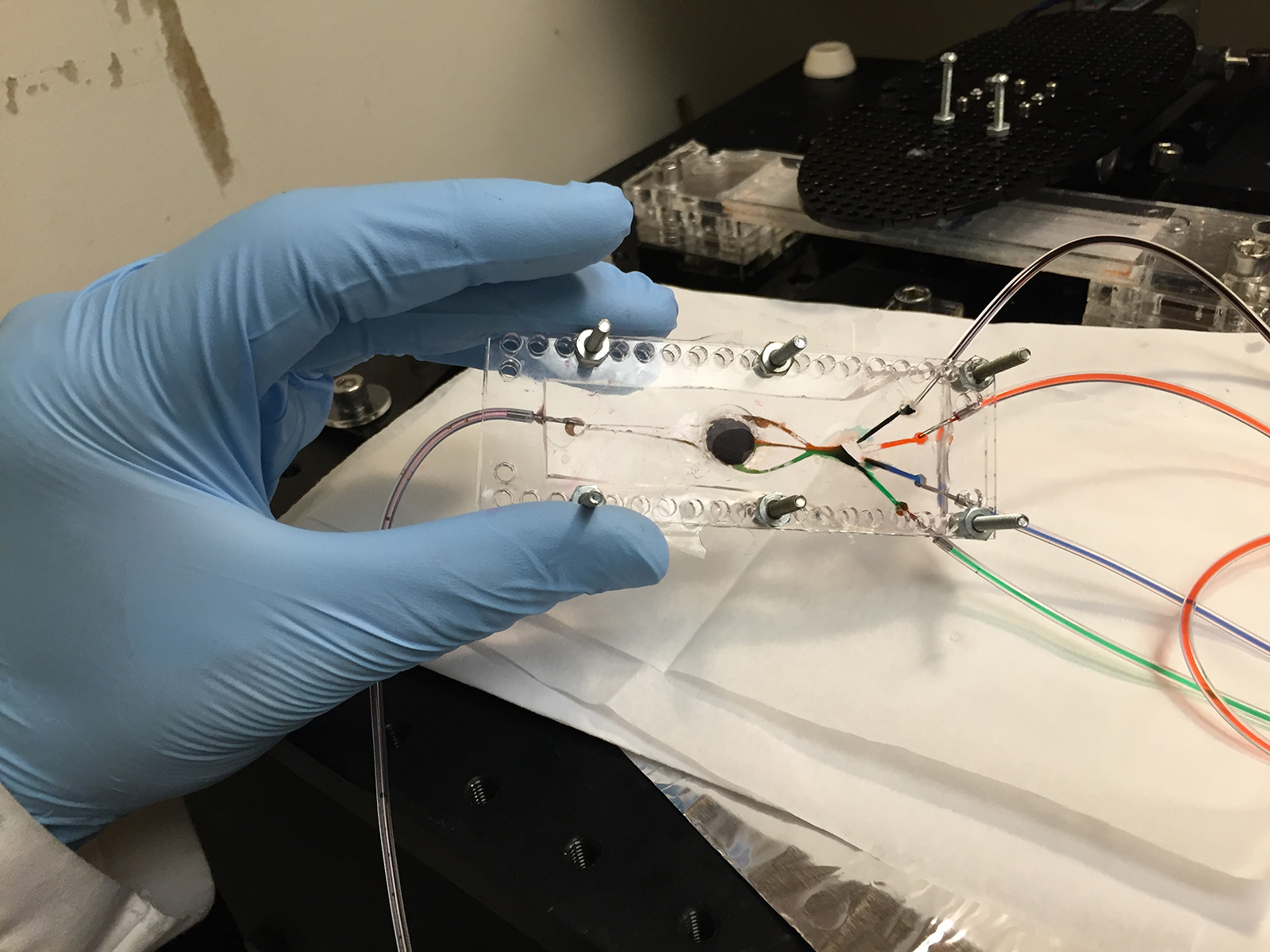Researchers invent device to synthesize tissue that could be used in transplants

UCLA researchers 3D printed tissue that could be used in implants. (Courtesy of UCLA Newsroom)
By Qiaozhen Wu
May 30, 2018 1:03 p.m.
UCLA bioengineers developed a device that uses 3D printing technology to create artificial tissue that could be used during transplants.
A team of researchers led by Ali Khademhosseini, an engineering professor at the UCLA Henry Samueli School of Engineering and Applied Sciences, discovered a technology that can print tissue using multiple materials. The study was published in Advanced Materials earlier this month.
The artificial tissue creates a protective layer around human cells and transports nutrients and oxygen to them. This allows cells to survive when implanted back into the body.
“One of our main goals is to create an environment that makes the cells happy,” Khademhosseini said.
Researchers were previously unable to recreate the complexity of human tissue because they were limited to using one material. Khademhosseini said that his new technology is able to replicate complex cellular patterns because it uses many types of printing materials.
Amir Miri, an assistant professor of mechanical engineering at Rowan University in New Jersey and author of the paper, said that the printer has two main components. The first component is a flat platform that distributes the the materials through small tubes into a chamber.
The second component, an array of millions of mirrors, rotates to project light onto the chamber in the shape of the tissue and causes the light-sensitive printing material to solidify into that shape, he said.
“(The mirror system) is the same technique used by a projector … in a home theater,” Miri said.
Miri said while creating the device, researchers considered the optimal ratios of inks, what types of wavelengths of light to use and how to build a machine that will distribute multiple materials.
Miri said that while he hopes this technology can be used to print artificial organs, he does not expect it to be a reality in the near future.
Song Li, chancellor professor and bioengineering chair at UCLA, said that while 3D printing the physical structure of the tissue is not difficult, more research is needed to figure out how to create a healthy environment for the cells.
Miri said that in the meantime, he is interested in using this technology for other applications, such as printing medications.


